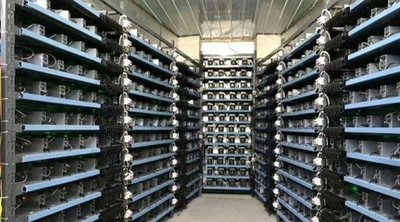In the rapidly evolving landscape of cryptocurrency mining, Ethereum ASIC miners have emerged as a pivotal force reshaping the dynamics of the blockchain validation process. Unlike their GPU-based predecessors, ASIC miners are engineered for a single purpose: to maximize hash rates while minimizing power consumption. This transition signifies not only a technological leap but also alters economic calculations for miners eager to sustain profitability in an increasingly competitive environment.
Understanding the current prices of Ethereum ASIC miners demands a keen eye on both market trends and hardware specifications. These machines, tailored specifically for Ethereum’s Ethash algorithm, are steadily becoming more accessible yet remain a premium investment due to their specialized architecture. Prices can range widely—from smaller-scale units designed for entry-level miners to industrial-grade rigs capable of dominating large mining farms. As demand fluctuates with Ethereum’s price volatility and network updates, so too does the market value of these ASIC machines.

Performance boosts in Ethereum ASIC miners are not solely about raw computational output; thermal efficiency, power draw, and firmware optimizations collectively dictate operational excellence. Recent model iterations incorporate advanced cooling solutions, leveraging heat dissipation technologies that keep rigs stable under intense workloads. Additionally, manufacturers invest heavily in optimizing chip architecture to deliver higher hash rates at lower energy costs—a critical factor for mining farms striving to protect their bottom line.
Delving deeper, mining farms equipped with ASIC rigs witness a profound transformation in operational capacity. The switch to ASIC technology drastically amplifies hash power density per square meter, enabling farms to scale with greater agility. This enhanced efficiency translates to improved overall profitability despite Ethereum’s transition toward proof-of-stake consensus mechanisms, which impact the availability and utility of mining resources.

Moreover, it is essential to juxtapose Ethereum ASIC miners with their counterparts for other cryptocurrencies—such as Bitcoin or Dogecoin—to appreciate ecosystem-specific nuances. While Bitcoin miners capitalize on the SHA-256 algorithm with ultra-high efficiency ASICs, Ethereum’s Ethash demands different architectural approaches, prompting innovation in chip design. This specialization ensures that miners must carefully select hardware aligned with the network they intend to secure, all while considering factors like energy prices, maintenance, and potential resale value.
Miners continuously seek firmware updates and community-driven tweaks to extract incremental improvements. These performance boosts often materialize through features like frequency scaling, voltage adjustments, and error reduction algorithms, reinforcing the importance of software alongside hardware advancements. Staying ahead in this competitive arena requires mining operators to embrace both technological upgrades and strategic algorithmic tuning to maximize mining rig yields.
Given the complexity of ASIC miners, hosting services for these specialized machines have become vital. Providers offer secure environments with stable power supplies, optimized cooling infrastructures, and sophisticated monitoring tools to ensure uninterrupted mining operations. For miners lacking the capacity to maintain rigs locally—whether due to power cost, space limitations, or technical expertise—hosting solutions offer a seamless alternative, enabling participation in the lucrative Ethereum mining landscape without logistical headaches.
It is also worth noting the ongoing impact of network protocol changes and how they relate to ASIC deployment. As Ethereum progresses towards Ethereum 2.0 with proof-of-stake, traditional mining faces obsolescence; however, ASIC holders leverage this transition window by optimizing earnings before the network fully shifts. Some miners diversify by repurposing ASIC rigs for compatible altcoins or exploring dual-mining strategies to sustain returns even as Ethereum mining declines.
In conclusion, Ethereum ASIC miners represent an intricate blend of cutting-edge technology and economic strategy. Their current prices and performance boosters are reflections of a high-stakes balancing act—between efficiency, power consumption, and market dynamics—that defines modern cryptocurrency mining. For mining farms and individual miners alike, understanding and adapting to these variables are crucial for thriving in a landscape that evolves as swiftly as the cryptocurrencies themselves.





One response to “Ethereum ASIC Miners: Exploring Current Prices and Performance Boosts”
The article dives into Ethereum ASIC miners, revealing surprising price fluctuations and breakthrough performance boosts, while weaving a narrative that challenges conventional mining wisdom and inspires fresh strategies in the dynamic crypto landscape.